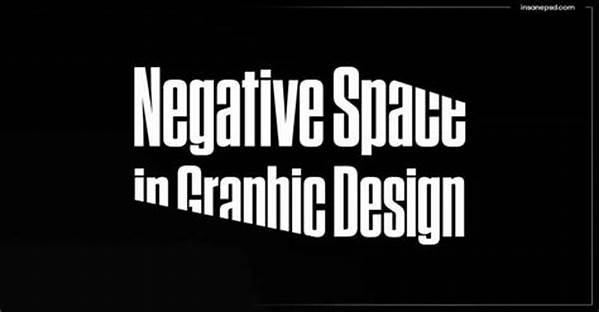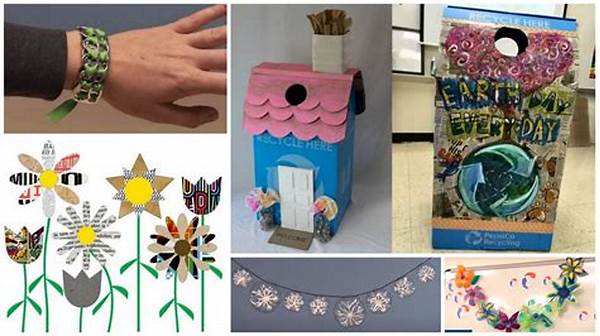Hey there! You know how sometimes less is more? Well, that couldn’t be truer when it comes to design. Enter the world of negative space – the unsung hero in the design universe. This magical concept isn’t just about what’s on the page; it’s about what’s missing. Sound confusing? Not at all! Let’s dive into the world of effective negative space design and see how the absence of something can speak louder than a cacophony of elements. Ready? Let’s go!
Read Now : Backgrounds In Linkedin Photography
Understanding the Magic of Negative Space
When we talk about effective negative space design, we’re delving into the art of using empty spaces to highlight the focal points of a composition. You know those designs that just speak to you? Chances are, they’ve nailed the negative space game. Negative space, or white space, is the area that surrounds the main subject. It’s like the silent partner to your visual narrative.
Think about the FedEx logo. Ever noticed that sneaky arrow between the ‘E’ and the ‘x’? That’s negative space at play. This sense of discovery and subtlety can turn a simple design into a memorable one. The beauty of effective negative space design lies in its ability to make viewers pause, think, and appreciate the cleverness behind the simplicity. It’s not just about minimalist aesthetics; it’s about creating a breathing room that allows every element to shine.
A well-executed negative space design doesn’t scream for attention. Instead, it whispers to the viewer, drawing them into a conversation with the artwork. This technique isn’t just limited to logos. Websites, posters, and even art pieces rely on negative space to create balance and hierarchy. By refining the elements and focusing on space, effective negative space design transforms cluttered chaos into visual symphonies. So, let the space breathe and let your designs communicate more with less!
Benefits of Effective Negative Space Design
1. Improved Focus and Clarity: With effective negative space design, your audience can focus more easily on the essential elements without being overwhelmed by clutter.
2. Enhanced Aesthetic Appeal: Utilizing negative space can give designs a clean and sophisticated look, making them more professional and attractive to viewers.
3. Increased Readability: Effective negative space design ensures that the text and other vital elements stand out, enhancing readability and comprehension.
4. Balanced Composition: By balancing elements with appropriate negative space, designs can achieve harmony, making them more visually pleasing.
5. Conveys Elegance and Sophistication: Designs with well-placed negative space are often seen as more elegant and upscale, elevating the overall perception of a brand.
Techniques to Create Effective Negative Space Design
If you’ve ever wondered how designers create striking visuals, the secret sauce is often effective negative space design. This technique lets designs breathe and focuses viewers’ attention where it’s needed. To master it, consider the following tips.
Start by identifying the essential elements of your design. Strip away everything that doesn’t serve a purpose or add value – clutter is your enemy. Next, play around with the spacing. Whether you’re working with text, images, or graphics, give them room to breathe. Remember, each element should have its space without feeling crowded.
Finally, embrace minimalism. This doesn’t mean your design has to be boring or stark. Instead, it’s about finding that sweet spot where every element coexists harmoniously with the empty spaces around it. With these techniques, you’ll be on your way to creating winning designs that use effective negative space design to communicate style and clarity.
How to Recognize Effective Negative Space Design
Want to become a savvy spotter of effective negative space design? Here are some clues:
1. Subtle Hidden Elements: Some designs feature hidden images or messages within the negative space. If you spot one, that’s a clear sign of effective design.
2. Visual Balance: A design that feels right and balanced at a glance likely uses negative space effectively.
3. Ease of Interaction: If a website or layout guides your focus naturally without chaos, negative space is hard at work.
4. Memorability Factor: Ever remembered a design because it made you think? That’s the power of negative space.
5. Clean and Minimal Feel: If a design feels uncluttered and soothing, negative space is playing a critical role.
Read Now : Diy Photography Backdrop Solutions
6. Hierarchy and Structure: Effective negative space design often uses space to create a clear hierarchy of information.
7. Functional Usability: Designs employing negative space often enhance usability, making interactions smoother.
8. Emphasis on Essentials: Designs that effortlessly highlight the primary message or image use negative space strategically.
9. Innovative Positive and Negative Interaction: Look for unique interplay between occupied and unoccupied spaces.
10. Achieved Intention: If the design communicates its purpose effortlessly, you can thank effective negative space design.
Exploring Iconic Examples of Negative Space Design
Let’s chat about some iconic examples. Ever noticed the arrow in the FedEx logo? Precisely! That sneaky arrow lives in the negative space, embodying movement and direction. Another classic is the WWF panda logo. Where one sees a cute panda, negative space outlines the clarity of its form with minimal strokes. Talk about effective negative space design!
Consider Apple’s sleek advertisements. They’re masters at letting products speak through spacious backdrops. This technique allows viewers to focus solely on the products, emphasizing quality, innovation, and a dash of impenetrable coolness. This is the elegance of effective negative space design doing its job.
Lastly, check out Nike. Their iconic swoosh, set against a backdrop of perfectly considered empty space, represents speed and simplicity. The negative space invites you in and lets the logo breathe. These examples prove that using negative space isn’t just about leaving things out – it’s about what you allow to stay and shine.
The Slang Guide to Negative Space Design
Ok, peeps, let’s break it down in layman’s terms. Negative space? It’s like the chill vibes in a crowded party – the part where everything else is busy, but there’s room for something epic at the center. When you nail that effective negative space design, you let your main points take the spotlight without any drama hogging the scene.
Imagine it like this: you’ve got a fresh pair of kicks (aka, shoes), and you’re in a room full of loud sneakers – all neon colors, ya know? Then, there’s you with crisp white sneakers against a clean background. Boom, focus on you – that’s the essence of effective negative space design. It’s all about establishing balance and making sure your content ain’t battling for attention.
Negative space isn’t for the lazy or the peeps who can’t commit. It’s a conscious choice to make things resonate and speak volumes with the power of space. Master it, and your designs will always leave a mark. It ain’t just about what’s there, peeps, but what’s not. That’s where the charm lies!
Wrap Up: The Takeaway on Effective Negative Space Design
In wrapping things up, let’s revisit what effective negative space design is all about. At its core, it’s the artful separation of elements that allows the eyes to breathe. By embracing simplicity and letting go of unnecessary clutter, designs achieve a perfect balance where each element stands out more vibrantly.
Negative space is not just the absence of content; it’s a strategic tool to highlight the importance of what remains. It gives life to designs, providing clarity and focus. Your audience subliminally appreciates the elegance and sophistication it brings, often resulting in memorable experiences and stronger brand recall.
So next time you’re crafting your masterpiece, remember, less can indeed be more. Let your designs enjoy the luxury of negative space and watch how your visual storytelling transforms. Because in a world crowded with images and graphics, effective negative space design lets your message not just be seen but felt. Cheers to crafting spaces that speak volumes!



